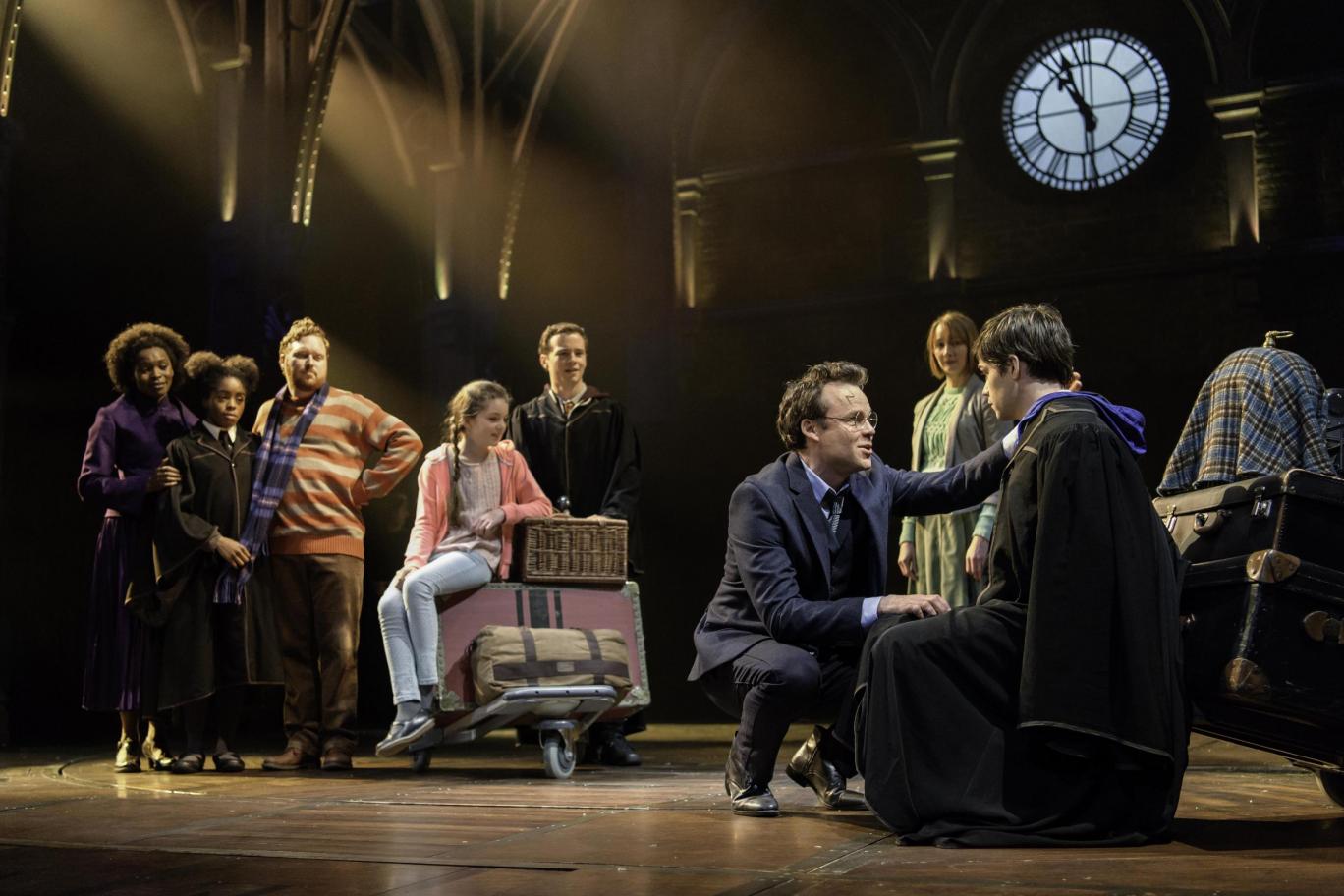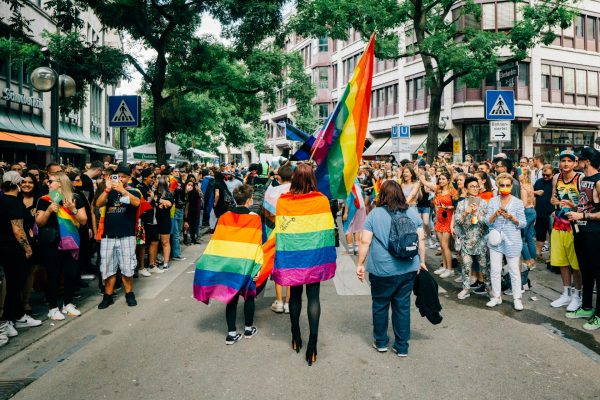Perhaps the most anticipated theatrical event of the season was last week’s opening of “Harry Potter and the Cursed Child, Parts One and Two.” This spell-binding new work is the product of three geniuses: the iconic J. K. Rowling (author of the original books), John Tiffany (the play’s profound director), and Jack Thorne (the playwright). Together they managed to create magic onstage in a way theatrical audiences have never seen before.
Perhaps thanks to the 35 million dollar budget (a record for a play) and the massive cast of 40, or perhaps due to the demands of the fantastical source material, “Cursed Child” takes stage magic to an entirely new level. Even the theater itself — a newly renovated Lyric Theatre complete with “H” monograms, gold phoenixes, and several mini-gift stores, transports you to the wonderful world of Harry Potter.
Sadly, before I go any further, I must be upfront, and I say I am bound by the Laws of Magic and forbidden to reveal any of the secrets of the play or even to discuss the plot. All I can say is that the play’s use of special effects and magic is unprecedented; you will never see a wire, or a trap door, or a body double. Objects disappear, actors seemingly teleport across the stage, wands produce spells, furniture flies, bodies are transfigured — all with the help of a dark, hollow stage, the perfect amount of fog, and genius of the creative team.
Special credit to Jamie Harrison, the cited “Illusions and Magic” supervisor, but equal praise must be given to Christine Jones (set), Katrina Lindsay (costumes), Neil Austen (lighting), and Gareth Fry (sound) who together make the magic happen and beautifully reinterpret the world we know and love from the books and films. The entire two-part, 5-hour spectacle will leave you asking over and over and over again, how did they do that? But just as I have no answers, neither will you, and this is what makes the play so magical.

What I can say is that “Cursed Child” picks up roughly around the time of the now-famous epilogue to the final book. Harry, Ginny, Ron, Hermione, and Draco are all dropping their children off at platform 9 3/4 to begin their journeys to Hogwarts. But of course, can we possibly expect that both Harry — and his child Albus Severus Potter — can stay away from danger? Unsurprisingly, chaos ensues.
Although it is certainly difficult to be critical of “Cursed Child” I will try for a brief moment. The script is certainly not stellar. Overall there are some bizarre pacing issues, ironic in a play about the passage of time. Part Two, in particular, suffers from structural confusion and perhaps suggests that this could have been a perfectly good single play, but the desire to make it two parts required stretching one plot line and then quickly creating another, unrelated one. But these flaws are entirely with the script, in production, there is so much magic that it is all too easy to get swept up and not even notice the problems in writing.
The only flaw in the production itself I can site is, surprisingly, the choreography. Perhaps you are wondering, why is there choreography in a play?, and the case of “Cursed Child” are you certainly correct in your confusion. The play is rather long as it is and the extended choreographic scene transitions are unnecessary and do not add anything to the piece. They mostly consist of swirling capes and moving actors on staircases. But just as the magic saves any textual issues, the fantastic music by Imogen Heap gives the choreography a pass.

Now that that’s over, back to singing the praises of this ground-breaking play. In a season otherwise filled with non-theater celebrities (I’m looking at you, Denzel Washington, Amy Schumer, Uma Thurman, Chris Evans, Andrew Garfield, and Lauren Ambrose) this play is refreshingly filled with mostly British actors unknown to us. They may not have the celebrity privilege of receiving applause on their first entrance, but by the end of the five-hour marathon, they certainly prove worthy of the standing ovation.
Though there is no one main character, time is split equally between the (infamous) trio of Harry, Ron, and Hermione and the younger generation, mostly Albus Potter and Scorpius Malfoy.

Jamie Parker plays an older Harry, as cavalier and confident as ever but now dealing with working in the government and raising moody children. His performance seems to be a perfect updating of the Harry we know and love. Noma Dumezweni plays Hermione in a way quite different from the previous incarnation, although no less intelligent, strong, and powerful. Paul Thornley is a hilarious Ron, who seemingly will never grow up, nor would we ever want him to.
The parental trio may be the characters we grew up with, but it is the children who catalyze the action, getting into their misadventures of massive proportion and impact. Sam Clemmentt plays a moody Albus Potter, and Anthony Boyle is lonely Scorpius Malfoy, an unlikely friendship of two teenagers living unhappily in the shadows of their famous dads. Both do quite a good job, but there is something undeniable charming about the eccentric enthusiasm of Boyle.
It will come as no shock that “Harry Potter and the Cursed Child” is sold out for months and that tickets are already rocketing to “Hamilton” prices. Nor is it even slightly surprising that the play received ten Tony Award nominations. In a somewhat unmemorable Broadway season, the unprecedented magic of “Harry Potter and the Cursed Child” is the show to see and the one to try to beat come awards night. Get a ticket while you still can.






